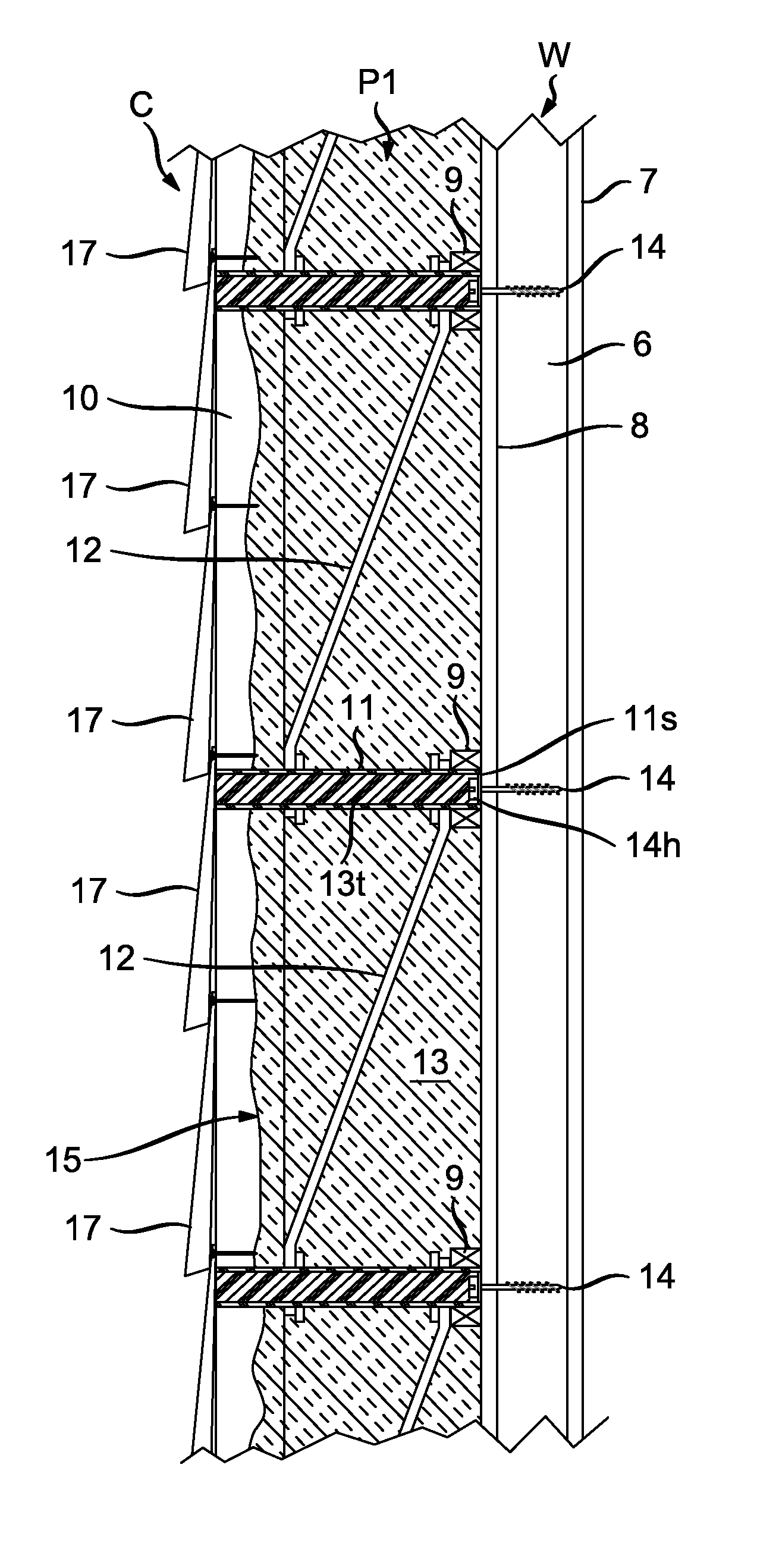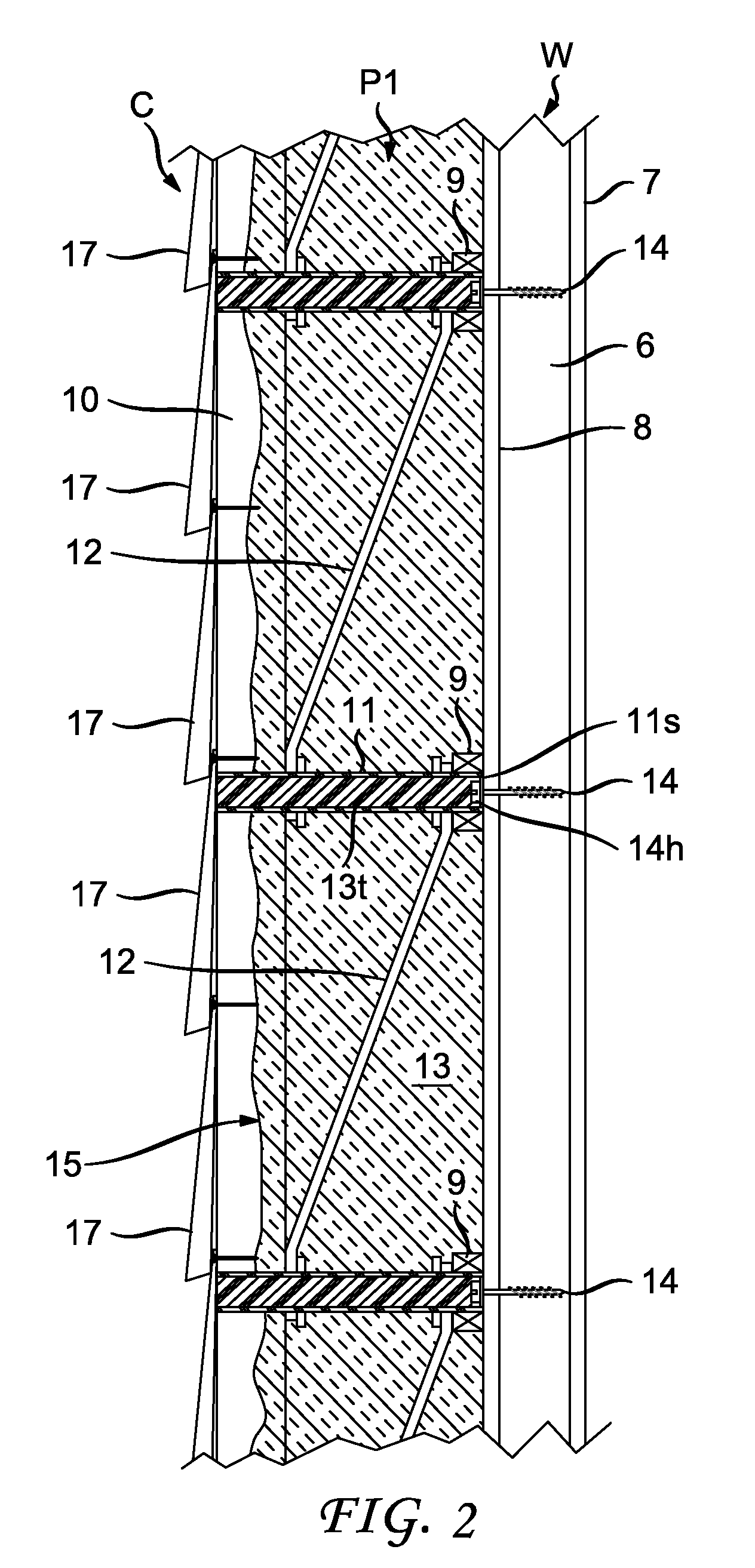Non-Structural Insulating Panel System
a non-structural, panel technology, applied in the direction of heat-insulating, roof drainage, building repairs, etc., can solve the problems of affecting the performance of the system, so as to reduce the cost and the amount of materials required, reduce the cost and the effect of material requirements
- Summary
- Abstract
- Description
- Claims
- Application Information
AI Technical Summary
Benefits of technology
Problems solved by technology
Method used
Image
Examples
Embodiment Construction
[0053]FIG. 1 is a perspective drawing showing the major components of an insulating panel P according to the invention. The panel P includes a plurality of horizontal stringers 1 at the interior of panel P (located adjacent a building structural wall, not shown) and a plurality of vertical stringers 2 at the exterior of panel P (located adjacent cladding material, not shown). The stringers 1 and 2 are embedded in insulating foam 3. The interior stringers 1 are connected to the exterior stringers 2 at multiple points using perpendicularly extending compression tube spacers 4 and laterally extending connectors or tension strips 5.
[0054]As will be explained below, the panel P is fastened to a building structural wall by means of and at the locations of the compression tubes 4. The laterally extending connectors or tension strips 5 connect the inner end of one compression tube 4 with the outer end of the compression tube in the row below. Accordingly, a compression tube 4, a lateral ten...
PUM
 Login to View More
Login to View More Abstract
Description
Claims
Application Information
 Login to View More
Login to View More - R&D
- Intellectual Property
- Life Sciences
- Materials
- Tech Scout
- Unparalleled Data Quality
- Higher Quality Content
- 60% Fewer Hallucinations
Browse by: Latest US Patents, China's latest patents, Technical Efficacy Thesaurus, Application Domain, Technology Topic, Popular Technical Reports.
© 2025 PatSnap. All rights reserved.Legal|Privacy policy|Modern Slavery Act Transparency Statement|Sitemap|About US| Contact US: help@patsnap.com



